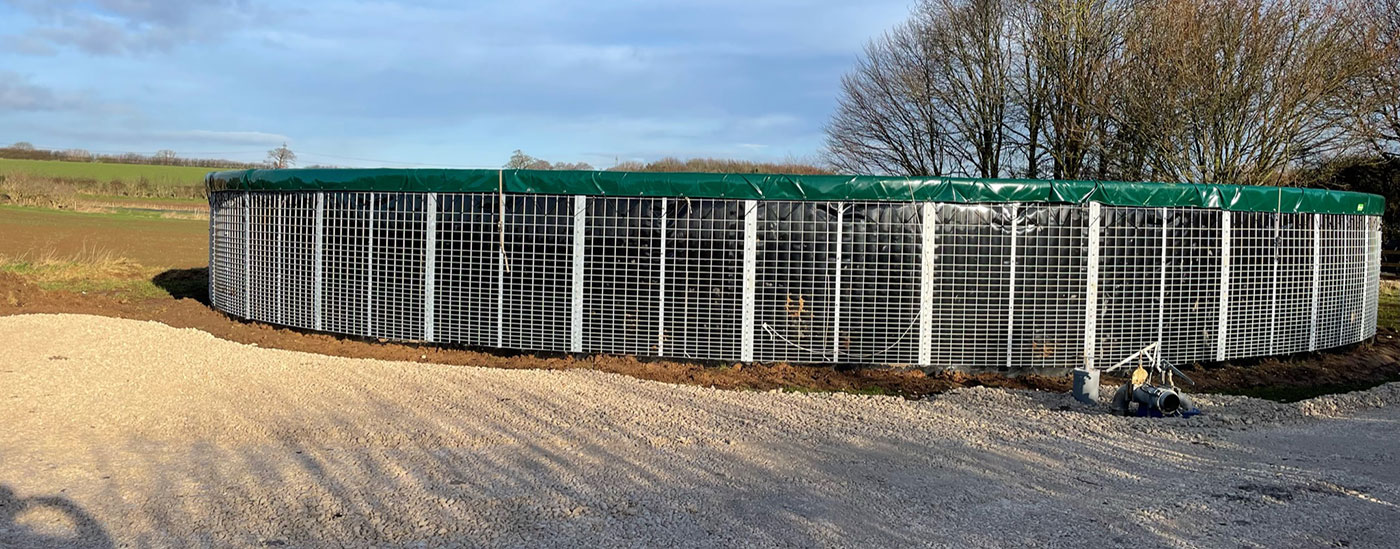The price of slurry stores can vary greatly depending on the size and the style of storage you wish to use. Some stores are typically more expensive than others, with lagoons costing the least and shuttered concrete stores costing the most. Typically the larger a slurry store, the more you have to pay, but choosing an unusually small slurry store can also cause the price to rise.
Digestate Storage
Send us a message

AWSM Farming are experts in providing bespoke slurry and digestate storage solutions, to ensure that our customers are storing liquid fertiliser efficiently and correctly. The expansion of the use of anaerobic digestate has resulted in an increased demand for flexible digestate and slurry storage solutions in recent years. As the sole uk importer of the genap silo system, AWSM Farming offers a unique edge over other providers of digestate storage.
Digestate & Slurry
Slurry and digestate are both typically stored in specialised tanks which allows it to be kept ahead of the spreading or injecting fertilising process. Digestate is nutrient-rich and is recognised as a highly effective fertiliser which is made up of indigestible material and deceased micro-organism.
Digestate Storage Benefits
Digestate is a valuable fertiliser that also contributes to sustainability, providing the farmer has invested in suitable storage systems. The benefits are lost if the digestate is stored in containers which allow for the nutrients and gasses escape.
Storage facilities for digestate should be constructed in line with the Water Resources regulations 2010 (SSAFO) which also strongly recommends for the digestate to be covered. Correct storage of digestate and covering solutions, ensure that rainwater cannot mix with the digestate solution, ammonia emissions and nitrogen loss is reduced and odour pollution and nuisance is kept to a minimum.
Spreading Times & ROI
Digestate storage offers farmers a good return on investment when properly managed. This means that investing in a digestate storage solutions and tanks can result in considerable savings.
Digestate should be applied at the correct time, typically when crops are already growing rapidly, in order for the plants to make full use of the nutrients, primarily the nitrogen output. If digestate is applied during other periods of growth, it is more likely to result in pollution, therefore farmers need to anticipate storing their digestate for longer periods of time to ensure that the application is performed to the correct specifications and timings.
By storing digestate until the prime time for application has proven to be more effective with farmers noticing a significantly higher rate of absorption of the nitrogen by the crop, ultimately, increasing the value, often up to four times against the value of crops that have been spread at earlier times.
Greater economic returns are achieved, not only through a more effective use of nitrogen but also the other major nutrients available within the digestate. Overall crop yields are boosted when bagged or standard fertiliser is replaced with digestate.
AWSM Farming Digestate & Slurry Storage Solutions
We offer an array of storage solutions and tanks which are custom-made to be used with slurry and digestate. We offer installation and construction of our bespoke storage solutions including lagoons designed to hold large amounts of digestate and unique silo systems.
Our storage tank solutions can be built in as little as 48 hours by a highly skilled team of professionals. They require no concrete surface beneath them or ground preparation apart from a level soil base. These easily relocated storage tanks do not require full planning permission and can be asset financed where required. Our digestate storage tanks are ideal for storing digestate and slurry to ensure suitable spreading times and loss of product and nutrients doesn’t occur, ensuring ROI.
We also offer custom lagoons which are built with a floating cover to protect the product and reduce the amount of gas escaping from the digestate and reduce the amount of rain reaching the pool. Lagoons can be erected up to 10,000m3, using a single sheet. For larger requirements, we are able to weld sheets together on site to ensure that your specific requirements are met.
For further details or to discuss your digestate storage requirements get in touch with AWSM Farming today.
Can anaerobic digestion work without thermal storage?
For bacteria to turn liquid into digestate effectively, the contents of a digester can be heated to maintain the ideal temperature for the process. When creating digestate, that sits around 30 to 38C. However, the process will still occur naturally if the liquid isn’t heated, albeit much slower and with decreased efficiency.
How much digestate storage is required?
The amount of digestate that is required for your farm depends entirely on how much land you have and how often you’ll need to apply it. Different land uses, soil types and crops grown will affect how and when digestate can be beneficial. The best way to determine how much you need is to speak with us and explain your situation, where we can offer our advice.





